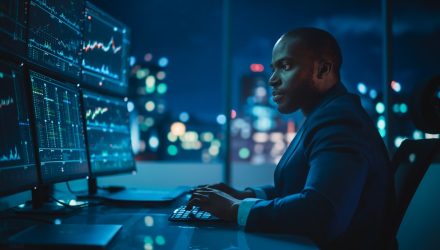Over the past 20 years, the night effect has been particularly prominent during April.
The overnight session often behaves better than the day session in that it frequently captures much of the upside while avoiding significant downturns. This is referred to as the night effect, a phenomenon whereby equities have historically performed better when local markets are closed than when markets are open.
Looking at April returns for the SPDR S&P 500 ETF Trust (SPY) between 2003 and 2022, the average return of the night trading session has been 1.95%. Meanwhile, the average day trading session return is 0.44%, according to data from NightShares.
During last year’s challenged market landscape, the day session gave up 7.63% in April while the night session declined just 1.24%. In April 2020 when markets recovered from the stock market crash, the day session contributed just 1.49% of gains, with 11.04% of gains coming from the night session.
Academic research conducted over the past 20 years has suggested multiple reasons why the phenomenon exists. The most common rationale focuses on the timing of information flow, risk management practices, and liquidity premiums arising from differences in the trading volumes between the day and night sessions.
The NightShares ETF suite stands out as an innovative approach to equity investing, offering ETF investors access to the night effect for the first time.
Investors can capture the night effect without giving up returns generated during the day with the NightShares 500 1x/1.5x ETF (NSPL). NSPL seeks to amplify the night effect while also offering daytime trading exposure. NSPL seeks to deliver 1x (100% correspondence) to the S&P 500 during the day, providing exposure to equity performance that advisors and investors are familiar with. The fund tilts toward the night, providing 1.5x, or 150% of the portfolio performance at night.
For more news, information, and analysis, visit the Night Effect Channel.

